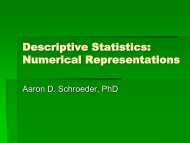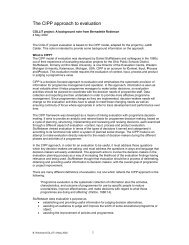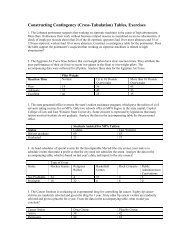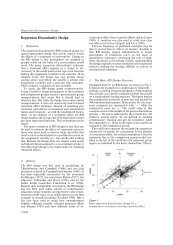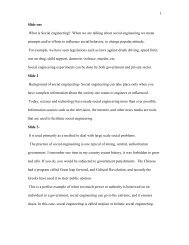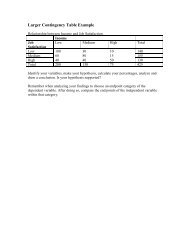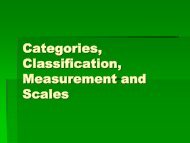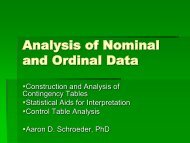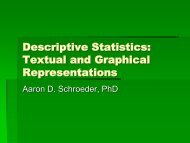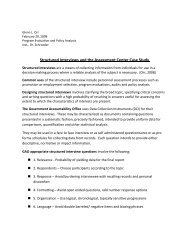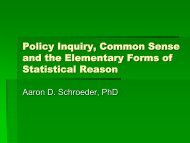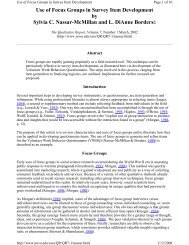The Problem
The Problem
The Problem
You also want an ePaper? Increase the reach of your titles
YUMPU automatically turns print PDFs into web optimized ePapers that Google loves.
Stakeholder Analysis – A Tool for Network Management<br />
I. Introduction – How do we know who should be at the table?<br />
As the theory and practice of public administration in this country has begun to move<br />
away from the concept of hierarchically-controlled, scientifically-based operations to<br />
more open, flatter, and citizen-inclusive “network” forms of management, the concept of<br />
“stakeholder inclusion” in the governance process has gained in prominence (deLeon,<br />
1992; Fischer, 1993). In fact, while it may be argued that the appropriate role of the<br />
“public” in public administration has been an active and ongoing area of inquiry and<br />
debate since the founding of this nation, a discernible contemporary movement to<br />
examine the role of the “public” in the process of administrative decision making has<br />
come about in the past three decades as a result of concern over citizen discouragement<br />
and apathy (Box, 1996; Putnam, 1995; Timney, 1996; Thomas, 1995, Schroeder and<br />
Wamsley, 1995). This trend is of profound importance to the field of public<br />
administration. Foremost is the effect that such an orientation has on the conceptual role<br />
of the administrator in the governance process.<br />
<strong>The</strong> concept of stakeholder analysis and management, and other theoretical approaches<br />
advocating increased public participation and deliberation, are scattered throughout the<br />
literature. Not only are agencies increasingly being mandated to incorporate some<br />
legitimate form of public/stakeholder participation process beyond the traditional notice<br />
and hearing standards (Rossi, 1997; Jones, 1997; Powell, 1997), but a valid and important<br />
normative/ethical component also exists (Donaldson and Preston, 1995; Clarkson, 1995;<br />
Tennert and Soden, forthcoming). As Donaldson and Preston put it, “<strong>The</strong> descriptive<br />
accuracy of the theory presumes the truth of the core normative conception, insofar as it<br />
presumes that managers and other agents act as if all stakeholders’ interests have intrinsic<br />
value. In turn, recognition of these ultimate moral values and obligations gives<br />
stakeholder management its fundamental normative base” (1995: 74). Moreover, these<br />
authors assert that “the ultimate managerial implication of the stakeholder theory is that<br />
managers should acknowledge the validity of diverse stakeholders interests and should<br />
3



